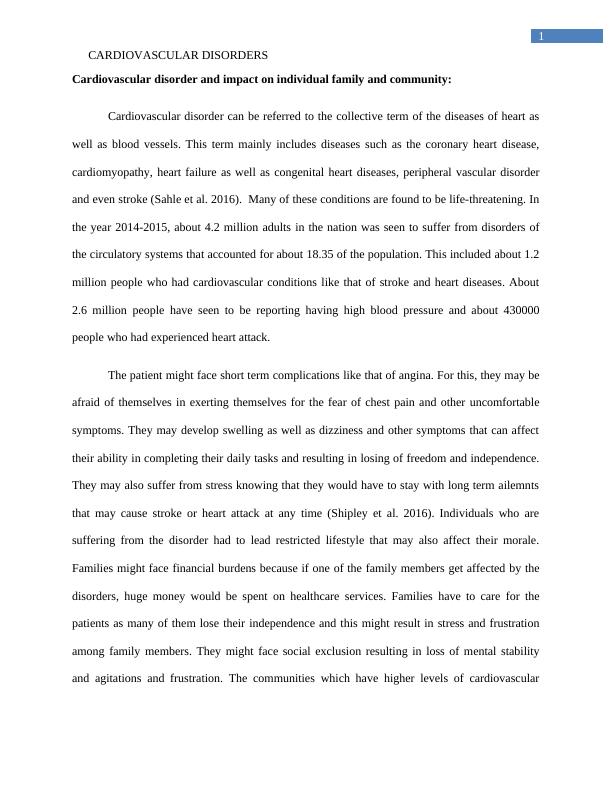Cardiovascular Disorders and Their Impact on Individuals, Families, and Communities
Unpacking the impact of a health issue on individuals, families, and communities, discussing national health priority, social determinants of health, and nursing strategies for improving patient outcomes. Also, designing a health promotion brochure/pamphlet.
8 Pages1762 Words23 Views
Added on 2023-01-18
About This Document
This document discusses the impact of cardiovascular disorders on individuals, families, and communities. It explores the short-term complications, financial burdens, and social exclusion faced by patients and their families. The document also examines the relationship between cardiovascular disorders and Australian National Health Priorities, as well as the role of social determinants of health in the development of these disorders. Additionally, it discusses the up streaming approach to nursing care for preventing and managing cardiovascular disorders.
Cardiovascular Disorders and Their Impact on Individuals, Families, and Communities
Unpacking the impact of a health issue on individuals, families, and communities, discussing national health priority, social determinants of health, and nursing strategies for improving patient outcomes. Also, designing a health promotion brochure/pamphlet.
Added on 2023-01-18
ShareRelated Documents
End of preview
Want to access all the pages? Upload your documents or become a member.
Impact of Cardiovascular Diseases on Nursing Practice
|14
|3277
|332
Cardiovascular Disease
|7
|1450
|39
Significance of Cardiovascular Disease
|10
|1284
|41
Significance of Cardiovascular Disease
|11
|1307
|52
Preventing Cardiovascular Disorders - Guidelines and Action Plans
|13
|3968
|71
Delivering Health Promotion Interventions for Cardiovascular Disease
|8
|776
|445



